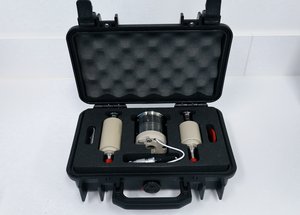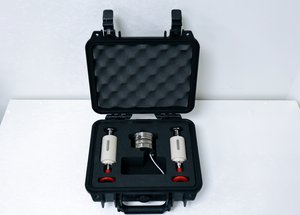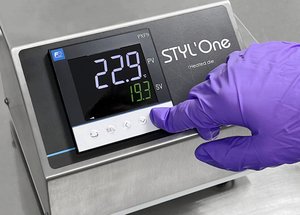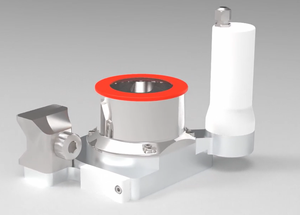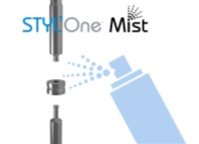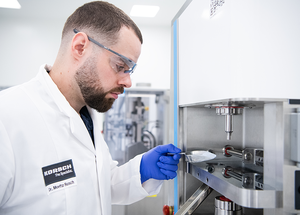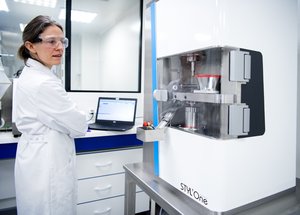Application bulletins
During tablet development, people study ejection forces (Fej) in order to avoid tablet defects during tablet manufacturing. Some of those defects, like lamination and capping are said to be linked to high ejection forces. High ejection forces can be induced by high die-wall force or friction between powder and die-wall (Frad=Force radial). To determine the origin of this phenomenon it can be useful to measure radial pressure. Indeed standard compaction studies are made by analysis of the vertical forces on upper and lower punches. However, the die also applies its own pressure to the powder horizontally. This strain, called the die wall pressure, is said to be the hidden variable of the compression.
The pressure of the powder to the die (Radial pressure) is computed by dividing the force by this surface area). Installing an instrumented die on your STYL’One allows you to measure the die-wall pressure and to perform an extensive characterization of your products. The instrumented die can be used to measure Maximum Die-wall Pressure (MDP) (at the compression peak) and Residual Die-wall Pressure (RDP) (when the axial pressure is removed).
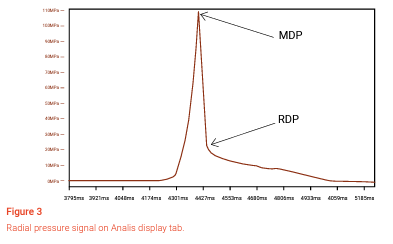
Radial pressure signal on Analis display tab
Comments
No comments posted yet.
Add a comment




